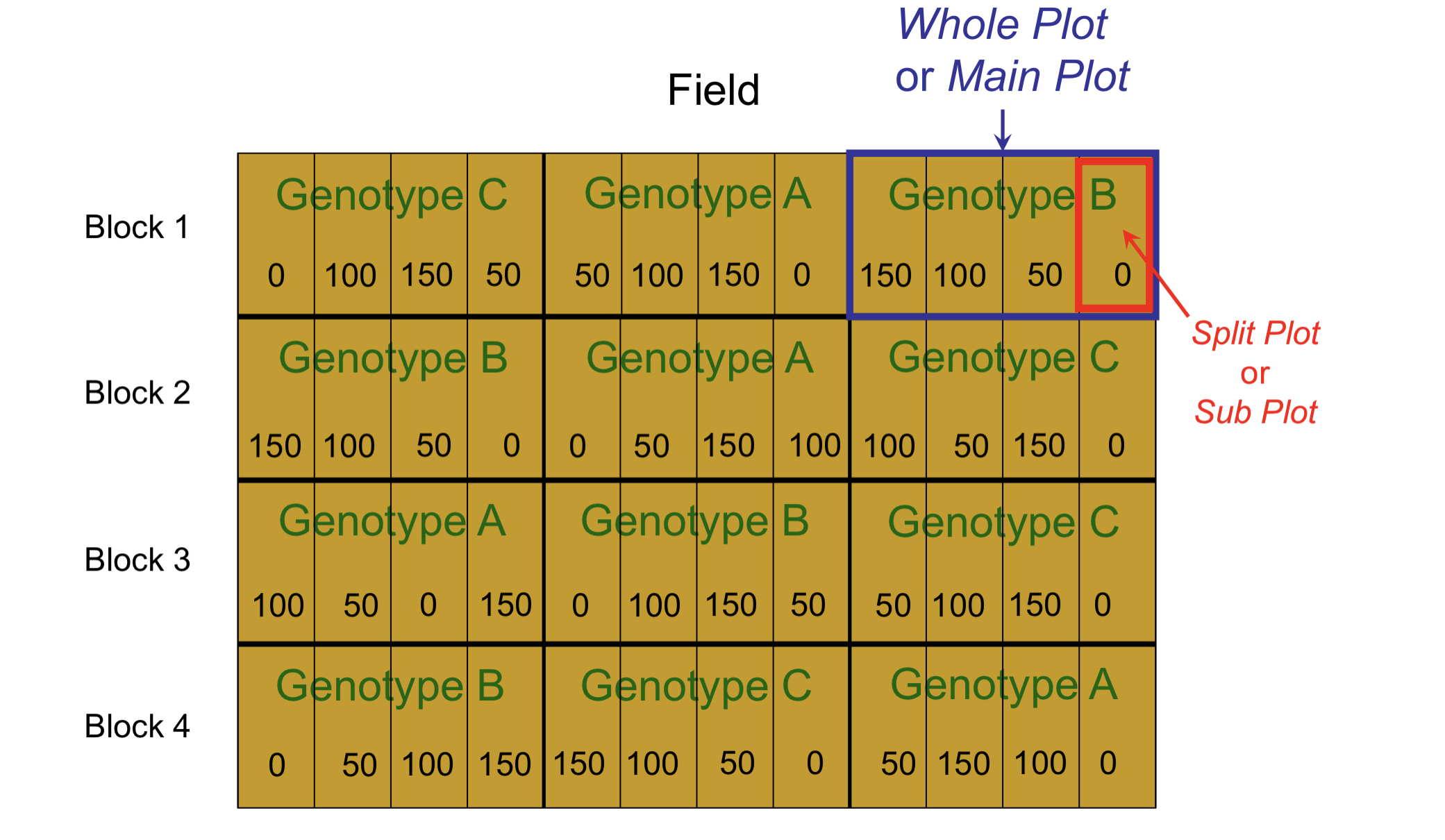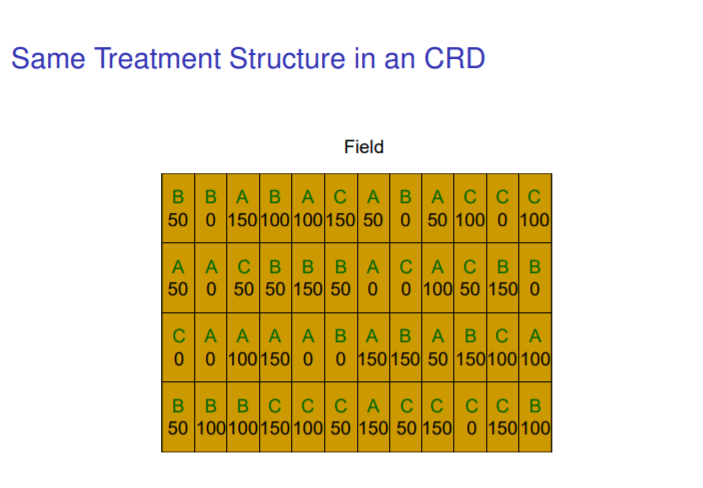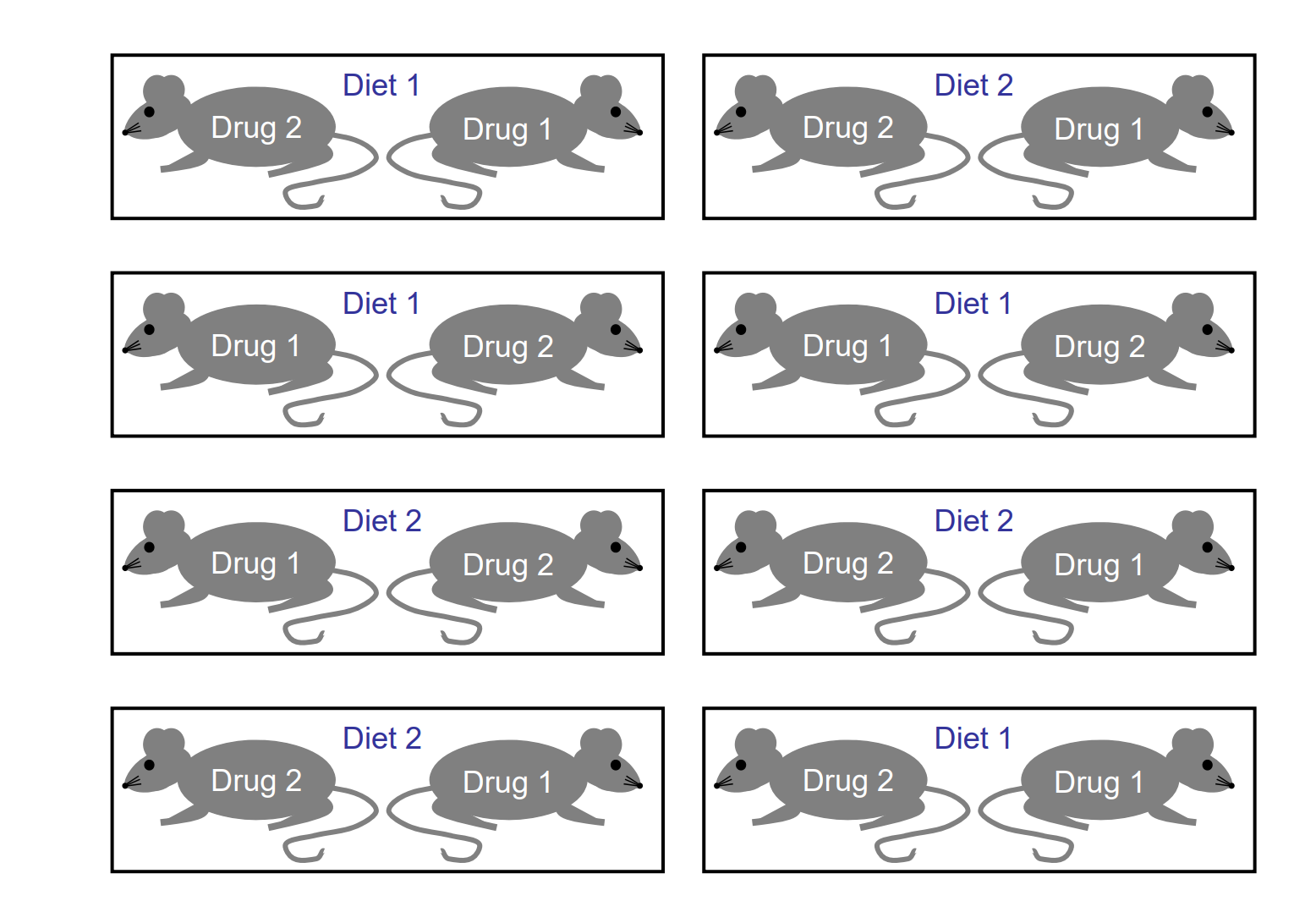Chapter 14 Linear Mixed-Effects Models for Data from Split-Plot Experiments
An example Split-Plot Experiment

- this experiment has two factors: genotype and fertilizer
- genotype is caller the whole-plot factor because its levels are randomly assigned to whole plots
- fertilizer is called the split-plot factor because its levels are randomly assigned to split plots within each whole plot
- we have two different sizes of experimental units: whole plots are the whole-plot experimental units and split-plots are the split-plot experimental units
 |
 |
Why Use a Split-Plot Design?
- Split-plot designs usually arise because logistical constraints make a CRD or RCBD impractical.
- For example, it may be easier to change from one fertilizer level to another as a tractor drives through a field, while it may be more difficult to change from planting one genotype to planting another.
- In the engineering literature, split-plot designs are sometimes called designs with hard-to-change factors.
Another split-plot experimental design:

- Diet is the whole-plot treatment factor.
- Litters are the whole-plot experiment units.
- Drug is the split-plot treatment factor.
- Mice are the split-plot experiment units.